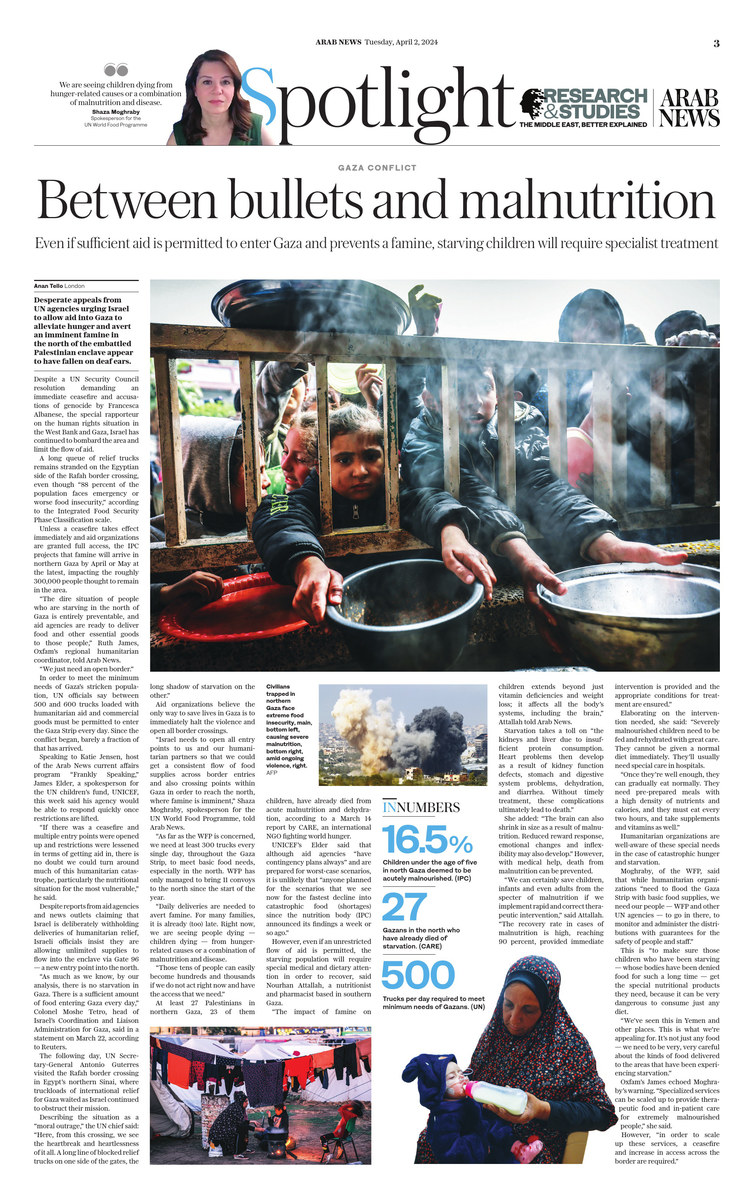LONDON: Desperate appeals from UN agencies urging Israel to allow aid into Gaza to alleviate hunger and avert an imminent famine in the north of the embattled Palestinian enclave appear to have fallen on deaf ears.
Despite a UN Security Council resolution demanding an immediate ceasefire and accusations of genocide by Francesca Albanese, the special rapporteur on the human rights situation in the West Bank and Gaza, Israel has continued to bombard the area and limit the flow of aid.
A long queue of relief trucks remains stranded on the Egyptian side of the Rafah border crossing, even though “88 percent of the population faces emergency or worse food insecurity,” according to the Integrated Food Security Phase Classification scale.

Displaced Palestinians gather to collect food donated by a charity before an iftar meal on the first day of the Muslim holy month of Ramadan in Rafah, on the southern Gaza Strip on March 11, 2024. (AFP)
On March 26, 12 people are reported to have drowned and six others crushed to death in a stampede when desperate Palestinians tried to collect food packages dropped from the air off the coast of northern Gaza.
The incident has prompted authorities in Gaza to call for an end to airdrops — an aid delivery method introduced by the US in early March as a workaround, but which critics have called “useless” and “flashy propaganda.”
In an earlier incident, an aid package air-dropped into Gaza is reported to have crashed into a crowd of people waiting below, killing five and wounding several others, when its parachute failed to open.
The US and other aid agencies are now looking to establish a maritime aid corridor. However, with the necessary port infrastructure still under construction, this will take many months.
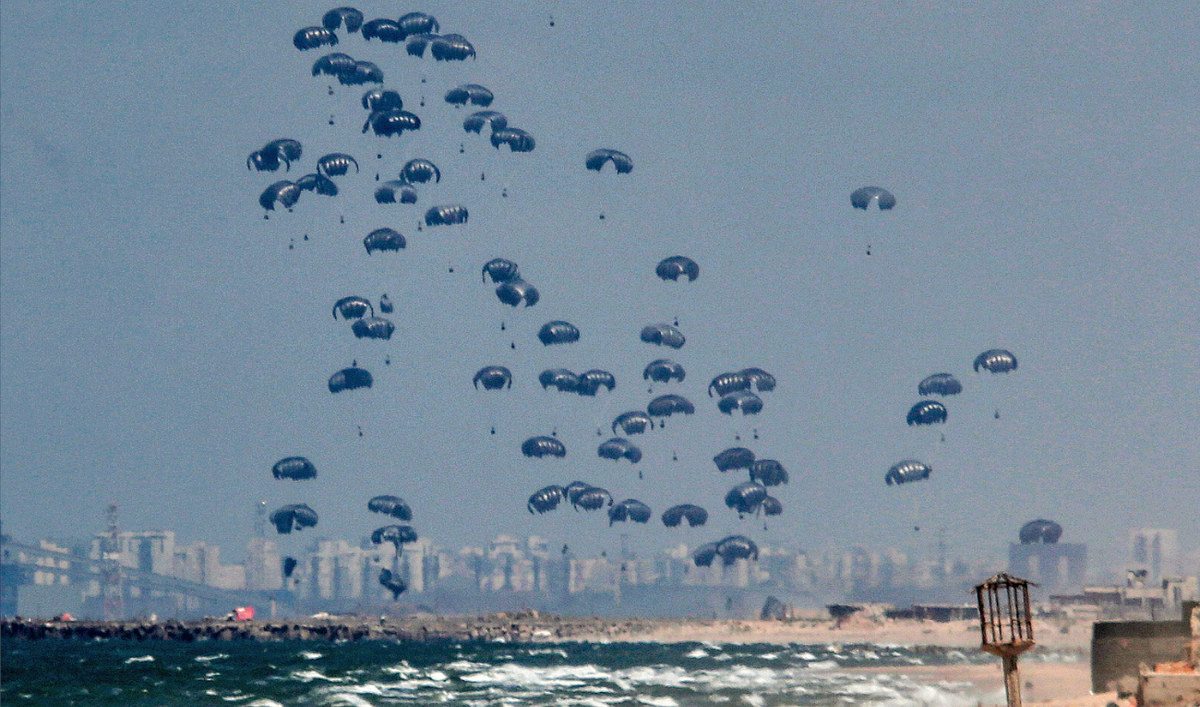
Humanitarian aid being dropped on the Gaza Strip, west of Gaza City, on March 25, 2024. (AFP)
Unless a ceasefire takes effect immediately and aid organizations are granted full access, the IPC projects that famine will arrive in northern Gaza by April or May at the latest, impacting the roughly 300,000 people thought to remain in the area.
“The dire situation of people who are starving in the north of Gaza is entirely preventable, and aid agencies are ready to deliver food and other essential goods to those people,” Ruth James, Oxfam’s regional humanitarian coordinator, told Arab News.
“We just need an open border.”
In order to meet the minimum needs of Gaza’s stricken population, UN officials say between 500 and 600 trucks loaded with humanitarian aid and commercial goods must be permitted to enter the Gaza Strip every day. Since the conflict began, barely a fraction of that has arrived.
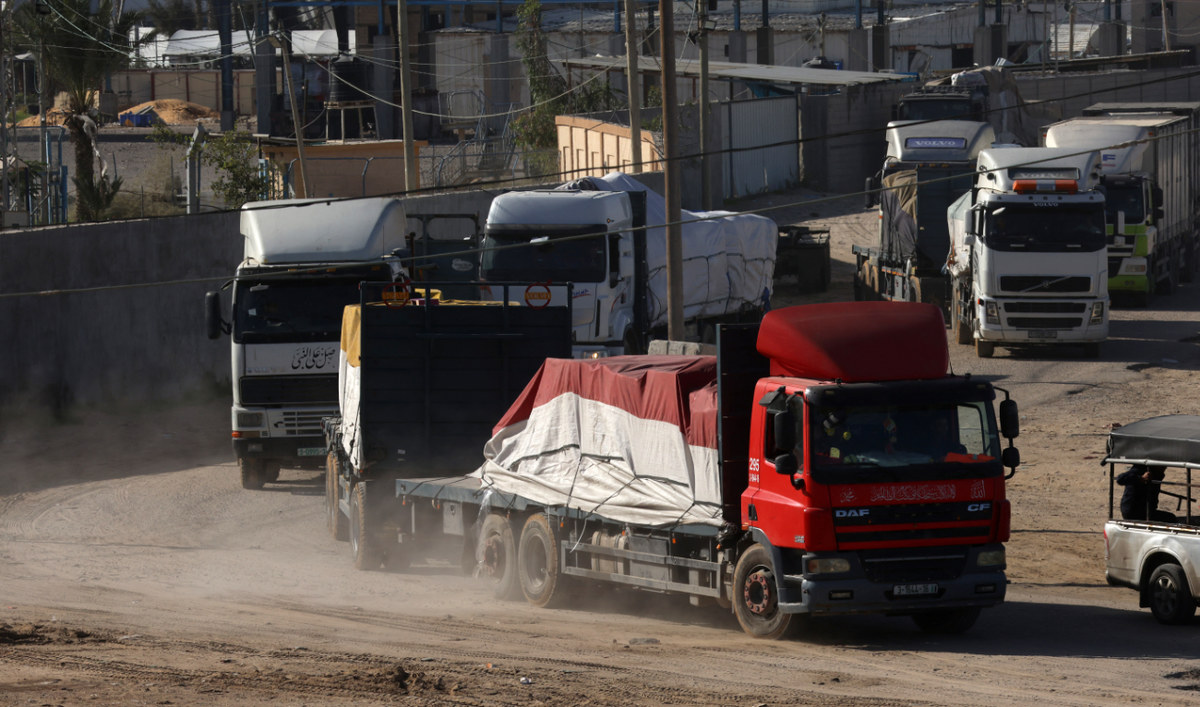
Trucks carrying humanitarian aid enter the Gaza Strip via the Rafah crossing with Egypt on November 24, 2023. (AFP)
Volker Turk, the UN high commissioner for human rights, recently told the BBC that Israel bore significant blame for having created what amounts to a man-made famine, and that there was a “plausible” case that Israel was using starvation as a weapon of war.
Speaking to Katie Jensen, host of the Arab News current affairs program “Frankly Speaking,” James Elder, a spokesperson for the UN children’s fund, UNICEF, this week said his agency would be able to respond quickly once restrictions are lifted.
“If there was a ceasefire and multiple entry points were opened up and restrictions were lessened in terms of getting aid in, there is no doubt we could turn around much of this humanitarian catastrophe, particularly the nutritional situation for the most vulnerable,” he said.
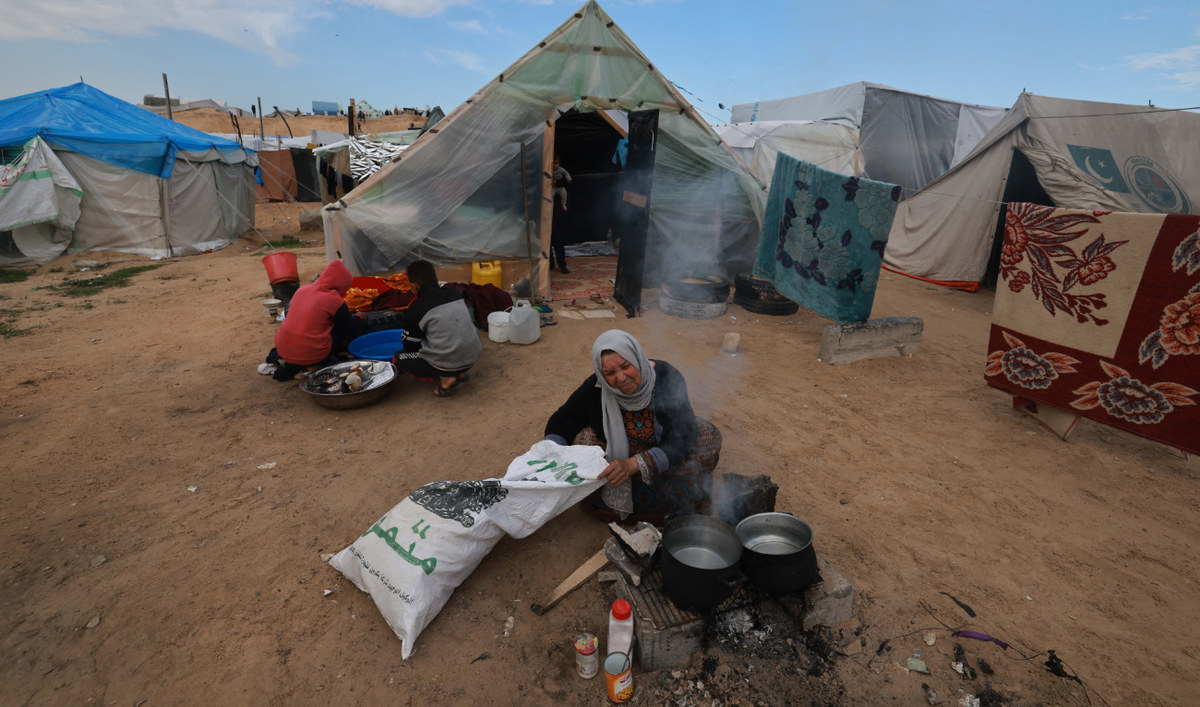
A Palestinian woman who fled Khan Yunis prepares food for her family at a camp set in the southern Gaza Strip Rafah region on February 15, 2024. (AFP)
Despite reports from aid agencies and news outlets claiming that Israel is deliberately withholding deliveries of humanitarian relief, Israeli officials insist they are allowing unlimited supplies to flow into the enclave via Gate 96 — a new entry point into the north.
“As much as we know, by our analysis, there is no starvation in Gaza. There is a sufficient amount of food entering Gaza every day,” Colonel Moshe Tetro, head of Israel’s Coordination and Liaison Administration for Gaza, said in a statement on March 22, according to Reuters.
The following day, UN Secretary-General Antonio Guterres visited the Rafah border crossing in Egypt’s northern Sinai, where truckloads of international relief for Gaza waited as Israel continued to obstruct their mission.
Describing the situation as a “moral outrage,” the UN chief said: “Here, from this crossing, we see the heartbreak and heartlessness of it all. A long line of blocked relief trucks on one side of the gates, the long shadow of starvation on the other.”
INNUMBERS
16.5% Children under the age of five in north Gaza deemed to be acutely malnourished. (IPC)
27 Gazans in the north who have already died of starvation. (CARE)
500 Trucks per day required to meet minimum needs of Gazans. (UN)
Aid organizations believe the only way to save lives in Gaza is to immediately halt the violence and open all border crossings, including Rafah and Kerem Shalom, to facilitate the unrestricted delivery of aid.
“Israel needs to open all entry points to us and our humanitarian partners so that we could get a consistent flow of food supplies across border entries and also crossing points within Gaza in order to reach the north, where famine is imminent,” Shaza Moghraby, spokesperson for the UN World Food Programme, told Arab News.
“As far as the WFP is concerned, we need at least 300 trucks every single day, throughout the Gaza Strip, to meet basic food needs, especially in the north. WFP has only managed to bring 11 convoys to the north since the start of the year.
“Daily deliveries are needed to avert famine. For many families, it is already (too) late. Right now, we are seeing people dying — children dying — from hunger-related causes or a combination of malnutrition and disease.
“Those tens of people can easily become hundreds and thousands if we do not act right now and have the access that we need.”
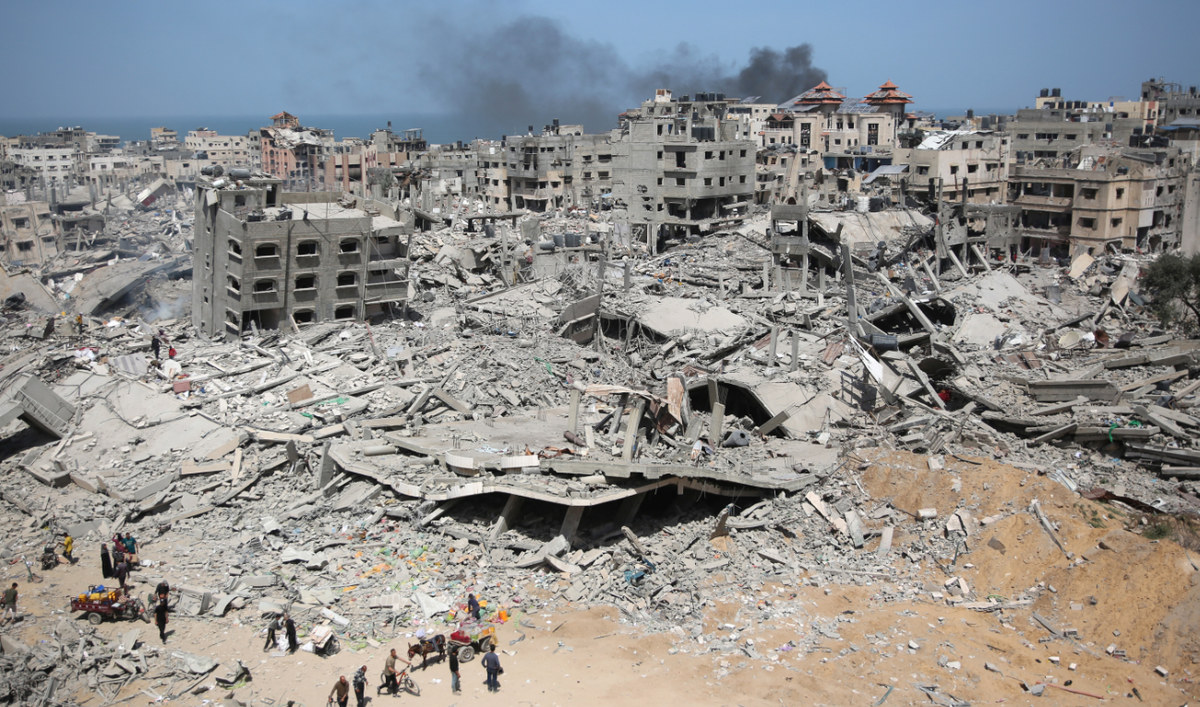
A general view shows the damage in the area surrounding Gaza’s Al-Shifa hospital after the Israeli military withdrew from the complex housing the hospital on April 1, 2024. (AFP)
At least 27 Palestinians in northern Gaza, 23 of them children, have already died from acute malnutrition and dehydration, according to a March 14 report by CARE, an international NGO fighting world hunger.
According to the IPC, around 16.5 percent of children under five years of age in the north of Gaza were severely malnourished as of February. That figure is now likely far higher.
UNICEF’s Elder said that although aid agencies “have contingency plans always” and are prepared for worst-case scenarios, it is unlikely that “anyone planned for the scenarios that we see now for the fastest decline into catastrophic food (shortages) since the nutrition body (IPC) announced its findings a week or so ago.”
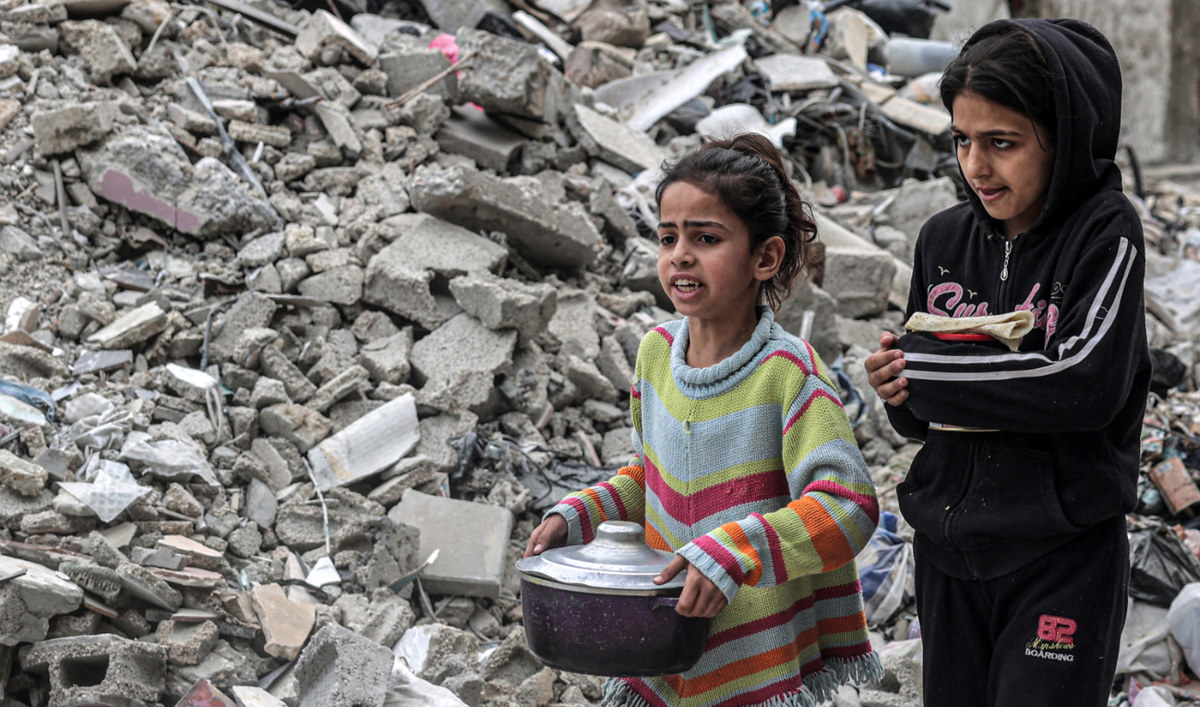
Aid organizations believe the only way to save lives in Gaza is to immediately halt the violence and open all border crossings. (AFP)
However, even if an unrestricted flow of aid is permitted to enter the embattled enclave, the starving population, especially children, will require special medical and dietary attention in order to recover, said Nourhan Attallah, a nutritionist and pharmacist based in southern Gaza.
“The impact of famine on children extends beyond just vitamin deficiencies and weight loss; it affects all the body’s systems, including the brain,” Attallah told Arab News.
Starvation takes a toll on “the kidneys and liver due to insufficient protein consumption. Heart problems then develop as a result of kidney function defects, stomach and digestive system problems, dehydration, and diarrhea. Without timely treatment, these complications ultimately lead to death.”
She added: “The brain can also shrink in size as a result of malnutrition. Reduced reward response, emotional changes and inflexibility may also develop.” However, with medical help, death from malnutrition can be prevented.
“We can certainly save children, infants and even adults from the specter of malnutrition if we implement rapid and correct therapeutic intervention,” said Attallah. “The recovery rate in cases of malnutrition is high, reaching 90 percent, provided immediate intervention is provided and the appropriate conditions for treatment are ensured.”
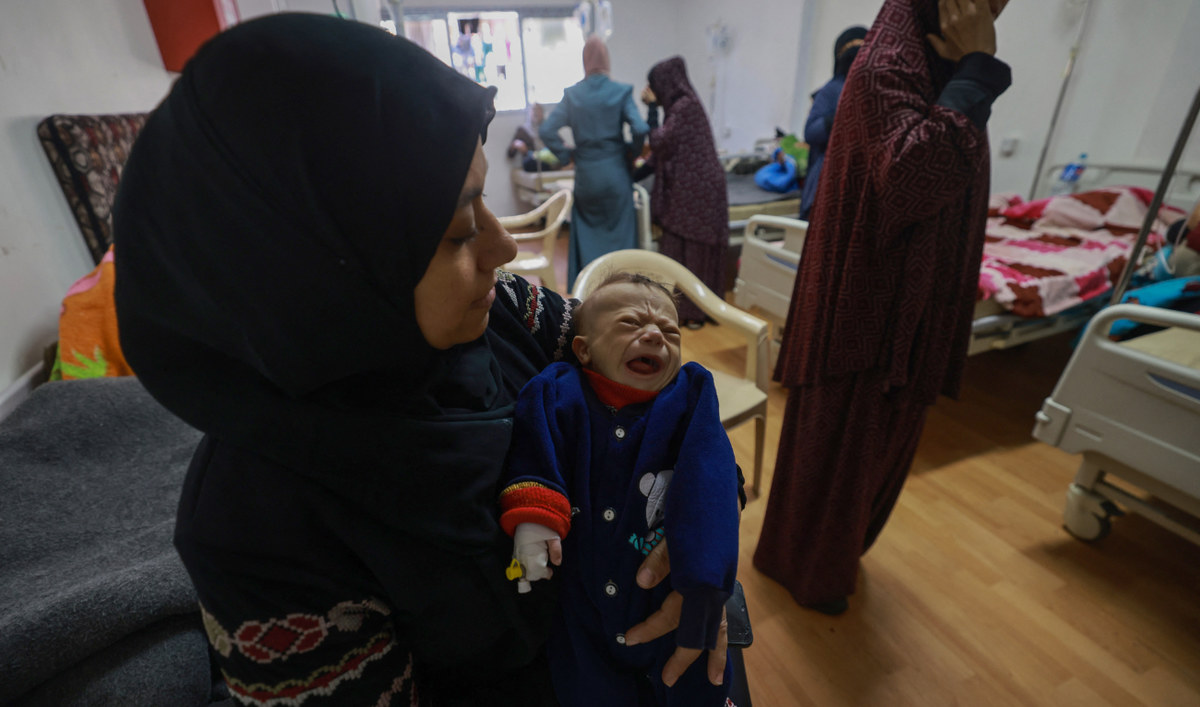
Palestinian children suffering from malnutrition receive treatment at a healthcare center in Rafah in the southern Gaza Strip on March 5, 2024. (AFP)
Elaborating on the intervention needed, she said: “Severely malnourished children need to be fed and rehydrated with great care. They cannot be given a normal diet immediately. They’ll usually need special care in hospitals.
“Once they’re well enough, they can gradually eat normally. They need pre-prepared meals with a high density of nutrients and calories, and they must eat every two hours, and take supplements and vitamins as well.”
Humanitarian organizations are well-aware of these special needs in the case of catastrophic hunger and starvation.
Moghraby, of the WFP, said that while humanitarian organizations “need to flood the Gaza Strip with basic food supplies, we need our people — WFP and other UN agencies — to go in there, to monitor and administer the distributions with guarantees for the safety of people and staff.”
This is “to make sure those children who have been starving — whose bodies have been denied food for such a long time — get the special nutritional products they need, because it can be very dangerous to consume just any diet.
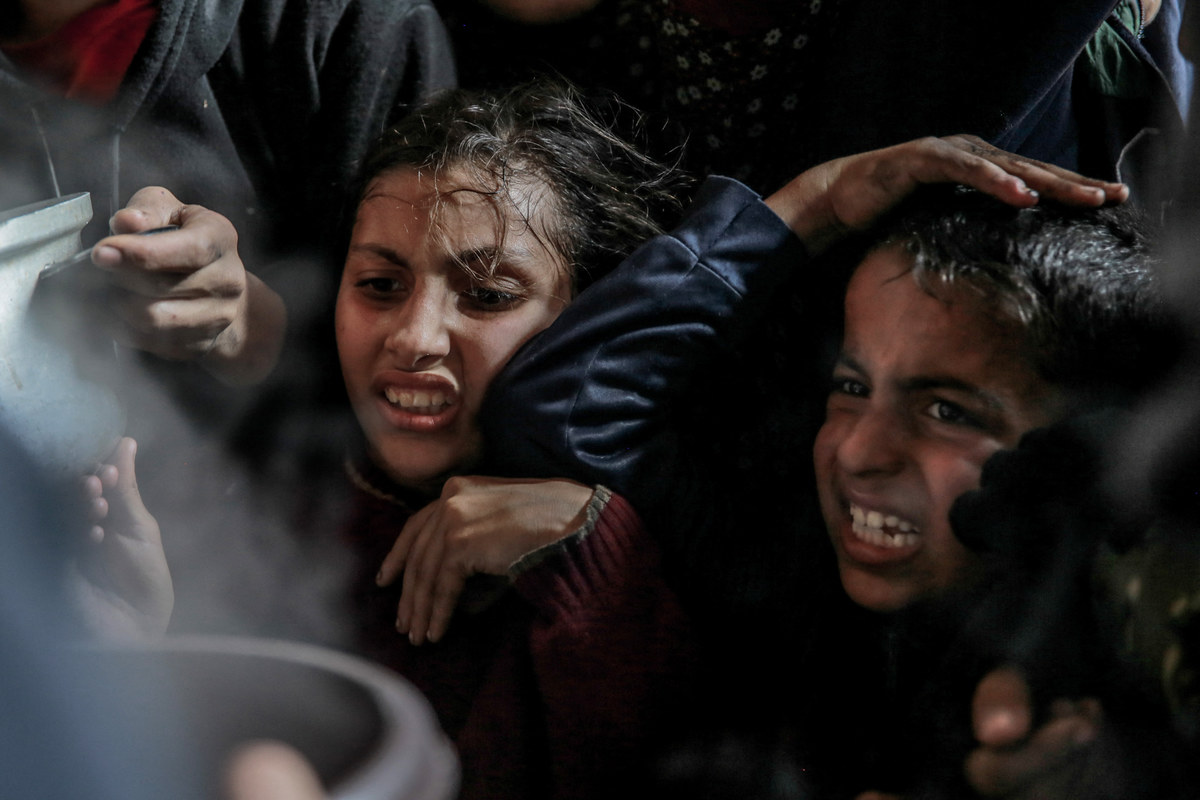
Palestinian children react as they gather to collect aid food in Beit Lahia, in the northern Gaza Strip, on February 26, 2024. (AFP)
“We’ve seen this in Yemen and other places. This is what we’re appealing for. It’s not just any food — we need to be very, very careful about the kinds of food delivered to the areas that have been experiencing starvation.”
Oxfam’s James echoed Moghraby’s warning. “Specialized services can be scaled up to provide therapeutic food and in-patient care for extremely malnourished people,” she said.
However, “in order to scale up these services, a ceasefire and increase in access across the border are required.”
